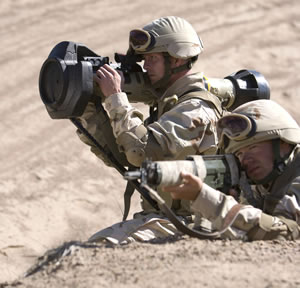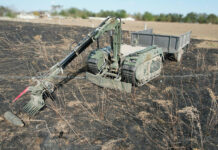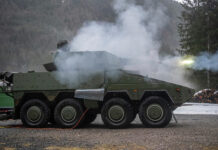

The Swedish ‘Next Generation Light Anti-tank Weapon’ (NLAW) RB-57 took off in recent years as more users line up with new orders. NLAW was developed by Saab Dynamics (originally Bofors) as a ‘point and shoot,’ short range anti-tank weapon, designed to defeat modern main battle tanks through ‘top attack’. Today, NLAW is considered the world’s newest light-weight anti-tank weapon, NLAW is currently operating with the British, Finish and Swedish armies since 2009. It has recently won another order from Luxembourg, equipping forces deployed on peacekeeping operations. Surprisingly, Saab has not addressed requirements for adding multi-purpose capabilities with NLAW, although having a proven technology in hand – the High Explosive Dual Purpose (HEDP) round for the Carl Gustaf M-3. The rapid conversion of the Predator proves the feasibility of such an option.
The flight course can be programmed as a flat trajectory, engaging the target in direct attack with the warhead fired forward, or aiming just above the target, by overflying about one meter above the target, with the warhead pointing downward, initiated by proximity fuse. The missile is designed for operation at ranges of 20 – 600 meters, using a reloadable launcher. The missile weighs 11.6 kg, including the reusable launcher. It has a diameter of 115 mm with an oversized warhead of 150mm, containing the high explosive anti-tank warhead. As a modern weapon, the NLAW is designed with insensitive energetic materials as an ‘insensitive munition’ (IM) and is capable of being fired from enclosure.














